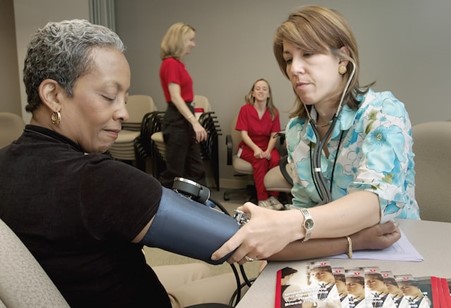Keith Hovan works as a healthcare executive and has decades of clinical and administrative leadership experience. Mr. Hovan has proven success in operations, performance improvement, quality and patient safety, organization strategy and medical staff engagement. Keith Hovan believes that non-profit healthcare can change the face of the industry. Below, Hovan’s views for the future of healthcare are discussed, how his goals for patients can be achieved, and the challenges that await those willing to take up his mission.
The bulk of Keith Hovan’s views on the future of healthcare revolve around the concept of Population Health. Hovan’s goal is to focus on patient-based care that addresses long-term concerns rather than short-term symptoms. However, rising costs and other economic concerns complicate widespread implementation.
It appears unlikely that Keith Hovan alone can succeed in championing population health, but this does not make its implementation impossible. A few concerns, however, must be considered.
Population Health Explained
In 2016, Keith Hovan spoke in an interview about his dreams for the future of healthcare. He referred to nation’s healthcare system as being based on a model of “sick care” and noted that this healthcare model typically revolves around financial incentives/gains. A better model, he argued, should focus on prevention and patient engagement in their own care. To this end, he suggests a model that incentivizes providers to promote health and assist individuals in the achievement of their optimal state of wellness as a more viable alternative.
Population health is the design, delivery, coordination, and payment of high-quality health care services to manage the Triple Aim, (improving the individual experience of care; improving the health of populations; and reducing the per capita costs of care for populations) for a population using the best resources we have available to us within the health care system. Much of the efforts today such as the Accountable Care Organization, risk stratification methods, patient registries, Patient Centered Medical Home, and other models of team-based care are all part of a comprehensive approach to population medicine. (https://www.ihi.org/communities/blogs/population-health-population-management-terminology-in-us-health-care)
In 2008 Don Berwick, Tom Nolan, and John Whittington first described the Triple Aim of simultaneously improving population health, improving the patient experience of care, and reducing per patient costs. The Institute for Healthcare Improvement (IHI) developed the Triple Aim as a statement of purpose for fundamentally new health systems that contribute to the overall health of populations while reducing costs. It has since become the organizing framework for the US National Quality Strategy, for strategies of public and private health organizations around the world. (https://nhchc.org/wpcontent/uploads/2019/08/ihiguidetomeasuringtripleaimwhitepaper2012.pdf)
Keith Hovan’s vision for population health includes the foundational elements of The IHI’s triple aim, while also expanding them. Hovan’s initiatives included:
- Working to eliminate barriers to health by working with government and social service agencies to address social determinants of health (SDOH) such as access to transportation, adequate housing, quality education beginning with preschool, access to quality food, environmental conditions and others.
- Developing farmers’ markets and donating unsold produce to community health centers
- Patient education programs on healthy dieting, complete with cooking classes
- Seeking to offer “value-based” payments, meaning higher-quality care at reduced cost
The Economic Reality of Population Healthcare
One of the greatest roadblocks to achieving Hovan’s vision is that healthcare it is often as expensive for the provider to deliver the service as it is for the patient. At the time of his 2016 interview, Hovan had just installed a new IT system at Southcoast Health’s many locations. This electronic health record cost over $100 million to install.
To implement the new system in a manner that supported his vision, Hovan ensured that patients themselves could use the new IT system to connect with health portals and become more involved in their own care. By empowering patients to take better care of themselves, they become less susceptible to rising medical costs.
This focus appears even greater when looking at just how much costs are rising. In 2020, Americans paid $4.1 trillion on healthcare services, a per capita average of more than $12,000. This was a 9.7% increase over the previous year.
To fully understand these numbers, consider that roughly 44% of Americans reportedly avoid seeking healthcare in 2022, specifically citing cost concerns as their primary motivator. This is a 76% increase in healthcare avoidance from the previous year.
 Focus on the Social Determinants of Health in Order to Promote Patient’s Long-Term Outcomes
Focus on the Social Determinants of Health in Order to Promote Patient’s Long-Term Outcomes
Aside from offering lower costs and better education related to health maintenance, Keith Hovan also believes healthcare providers must focus more on healthcare from a demographic point of view. Some marginalized groups may have different needs than others, and doctors must work to understand these.
Hovan’s examples included women, infants, patients with substance use disorders, and others suffering from behavioral health issues or general neurodivergence. However, many patients in 2022 would inevitably like to see patients who are challenged with obesity added to the list.
Even at the time of Hovan’s interview, many obese patients already felt that doctors often ignore alarming symptoms and simply tell their patients to lose weight. In the same manner Hovan wants doctors to better understand and humanize those struggling with substance use; his vision would also require doctors to do the same with patients who are overweight.
In short, Hovan’s definition of patient-focused care examines the entirety of the individual patient. Weight, daily habits, differences in age or sex, and many other factors that must be considered.. Especially in an age of rising costs, patients will not seek care unless they trust their providers.
Challenges
Hovan was the primary champion of these initiatives at Southcoast Health. During his tenure he assembled and lead an outstanding team that is well positioned to continue that work.
Population health management presents enough challenges on its own. It necessitates leaving a long-standing healthcare model behind in favor of a new one. Doctors and administrators alike must learn to think differently.
For Hovan, this was easy. His experience as a nurse provided more interaction with patients than many doctors ever get. This was the mindset with which he went into hospital administration. Without a patient-focused, interactive experience, there may be few with Hovan’s level of understanding willing to push his initiatives.
Conclusion
Now is the time to remove barriers to care, promote higher levels of patient engagement and truly be committed to addressing the SDOH that perpetuate the inequities that are embedded in our current system and invest in the foundation of our system; the primary care provider. Change will not be easy, it never is, but as Hovan said during his interview: “if we keep the patient at the center of all that we do it becomes abundantly clear what the right things to do are.”








